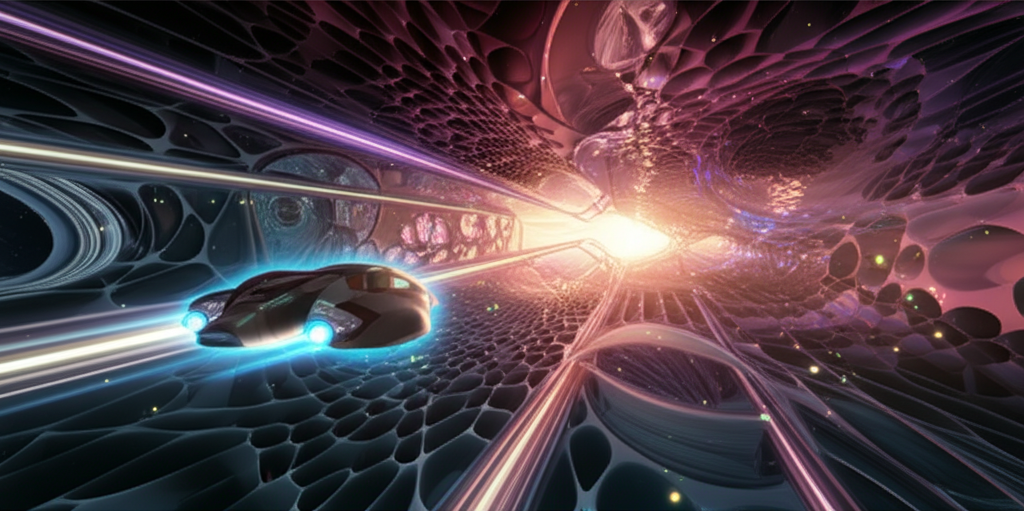Biorhythm Synchronized Transport: Vehicles That Match Your Life Cycles
Revolutionary biometric monitoring creates transportation systems that synchronize with human biorhythms, optimizing travel timing and vehicle behavior to match natural biological cycles.

Transportation has evolved to work in perfect harmony with human biology. Biorhythm synchronized transport systems monitor and adapt to individual biological cycles, optimizing travel timing and vehicle behavior to enhance health, performance, and well-being.
Advanced biometric monitoring technology continuously tracks multiple biological rhythms including circadian cycles, heart rate variability, hormonal fluctuations, and neural activity patterns. This data enables vehicles to adapt their operation to match passengers' biological states.
The breakthrough came through understanding how transportation timing and conditions affect human biological rhythms. Vehicles can now optimize departure times, route selection, and environmental conditions to support rather than disrupt natural biological cycles.
Vehicle systems designed for biorhythm synchronization feature comprehensive biometric sensors that monitor passengers' vital signs, hormone levels, brain activity, and other biological indicators in real-time without invasive procedures.
Synchronization occurs through adaptive vehicle behavior that matches passengers' biological states. During high-energy periods, vehicles provide stimulating environments, while during rest phases, they create calming, sleep-conducive conditions.
Circadian rhythm optimization ensures that travel schedules support natural sleep-wake cycles. Vehicles can adjust lighting, temperature, and even route timing to minimize jet lag and circadian disruption during long-distance travel.
The technology provides personalized transportation experiences tailored to individual biological patterns. Each passenger's unique biorhythms are learned and accommodated, creating truly personalized travel optimization.
Health benefits include reduced travel fatigue, improved sleep quality, and better overall well-being through transportation that works with rather than against natural biological processes.
Performance optimization occurs through timing travel during peak biological performance periods. Athletes, professionals, and students can schedule transportation to arrive at destinations when their biological systems are optimized for peak performance.
Therapeutic applications include using synchronized transport to treat circadian rhythm disorders, seasonal affective disorder, and other conditions related to biological cycle disruption.
The vehicles can predict optimal travel times based on biological rhythm analysis, suggesting departure times that will result in the best passenger experience and minimal biological disruption.
Group travel synchronization considers the biorhythms of multiple passengers, finding optimal timing and conditions that work well for all travelers while accommodating individual biological differences.
Environmental adaptation includes adjusting vehicle climate, lighting, and acoustic conditions to support passengers' current biological states and promote optimal biological function during travel.
Long-term health monitoring through biorhythm synchronized transport provides valuable data for healthcare providers and enables early detection of biological rhythm disorders or health issues.
Future developments include vehicles that can actively influence biological rhythms through targeted light therapy, sound frequencies, and other interventions to optimize passenger health and performance.
Related Articles

Quantum Foam Navigation: Traveling Through Spacetime's Smallest Structures
Revolutionary quantum foam manipulation technology enables vehicles to navigate through the fundamental fabric of spacetime itself, accessing transportation networks at the Planck scale.

Psychic Resonance Vehicles: Transportation Through Mental Telepathy
Revolutionary psychic amplification technology creates vehicles that respond to telepathic commands and connect minds across vast distances through quantum consciousness networks.

Nano Swarm Vehicles: Self-Assembling Transportation Clouds
Revolutionary nanotechnology creates vehicles from billions of coordinated nanobots that can form any transportation configuration and adapt in real-time to changing conditions.